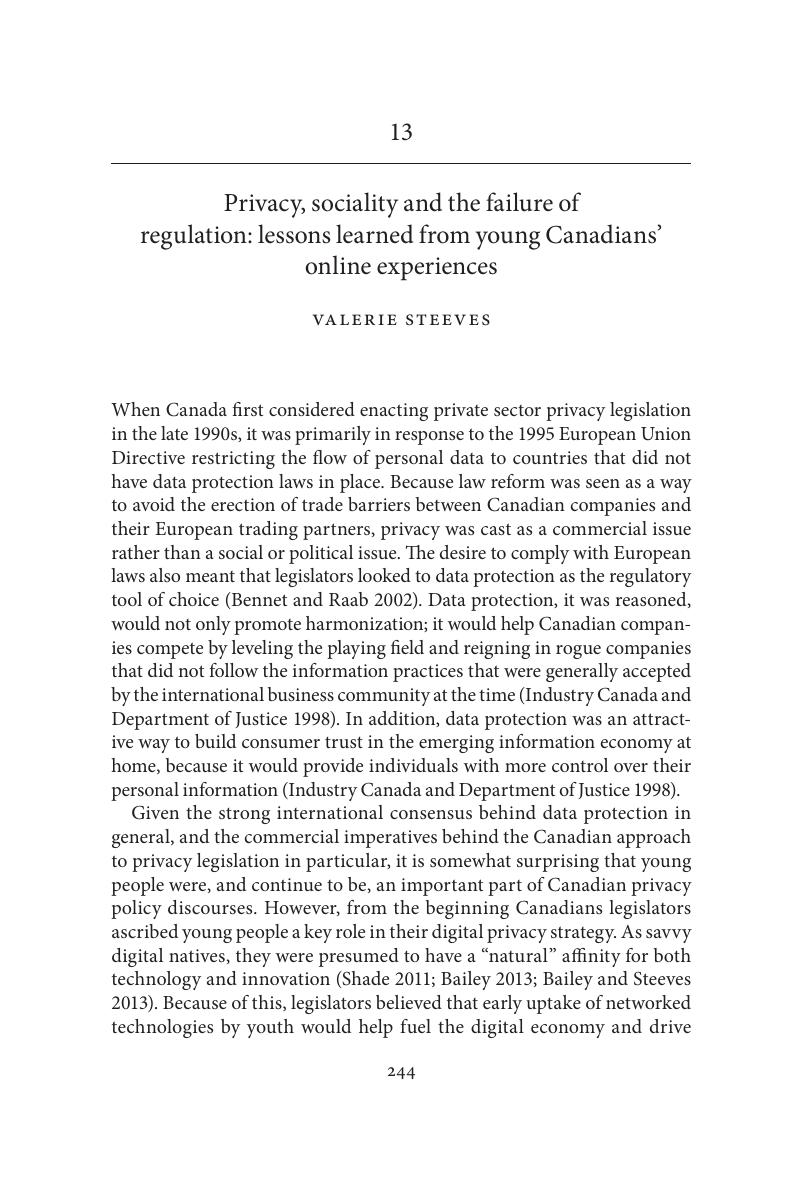Book contents
- Half title page
- Title page
- Copyright page
- Contents
- Contributors
- Book part
- Glossary
- Table of cases
- Table of statutes
- Introduction
- Part I The social dimensions of privacy
- Part II Privacy: practical controversies
- Part III Issues in privacy regulation
- 12 The social value of privacy, the value of privacy to society and human rights discourse
- 13 Privacy, sociality and the failure of regulation: lessons learned from young Canadians’ online experiences
- 14 Compliance-limited health privacy laws
- 15 Respect for context as a benchmark for privacy online: what it is and isn’t
- 16 Privacy, technology, and regulation: why one size is unlikely to fit all
- 17 The value of privacy federalism
- Index
- References
13 - Privacy, sociality and the failure of regulation: lessons learned from young Canadians’ online experiences
from Part III - Issues in privacy regulation
Published online by Cambridge University Press: 05 July 2015
- Half title page
- Title page
- Copyright page
- Contents
- Contributors
- Book part
- Glossary
- Table of cases
- Table of statutes
- Introduction
- Part I The social dimensions of privacy
- Part II Privacy: practical controversies
- Part III Issues in privacy regulation
- 12 The social value of privacy, the value of privacy to society and human rights discourse
- 13 Privacy, sociality and the failure of regulation: lessons learned from young Canadians’ online experiences
- 14 Compliance-limited health privacy laws
- 15 Respect for context as a benchmark for privacy online: what it is and isn’t
- 16 Privacy, technology, and regulation: why one size is unlikely to fit all
- 17 The value of privacy federalism
- Index
- References
Summary

- Type
- Chapter
- Information
- Social Dimensions of PrivacyInterdisciplinary Perspectives, pp. 244 - 260Publisher: Cambridge University PressPrint publication year: 2015
References
- 3
- Cited by



